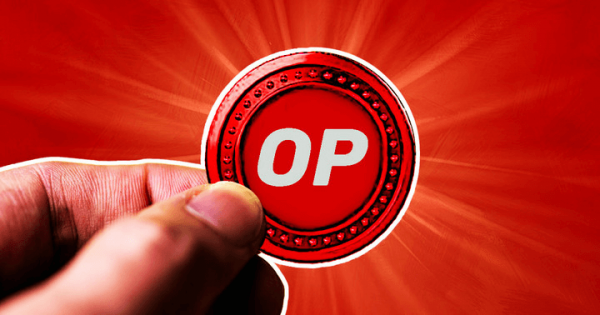What is Optimism (OP)?
Compared to the first level (L1) of the Ethereum network, the Optimistic blockchain's Optimistic Rollups technology reduces transaction fees by a factor of ten while also making it simple to deploy any smart contracts and decentralized applications written in the Solidity language on...

Compared to the first level (L1) of the Ethereum network, the Optimistic blockchain’s Optimistic Rollups technology reduces transaction fees by a factor of ten while also making it simple to deploy any smart contracts and decentralized applications written in the Solidity language on the second level network.
How do You Use Optimism?
The Optimism protocol makes use of Optimistic Rollups technology to improve performance and reduce transaction costs. The core of the idea is that while the main Ethereum network is tasked with creating blocks and maintaining security, the second-level network handles transaction processing and the execution of smart contracts.
The L2 network’s Optimistic Virtual Machine (OVM), which is exclusive to the Optimism network, enables you to run decentralized applications and smart contracts created for Ethereum without any modifications.
OVM operates under the “optimistic execution” tenet without verifying the legitimacy of each transaction in order to accelerate transaction processing. That is to say, as contrast to the Ethereum main network, each transaction in the Optimism L2 network is assumed to be authentic until proven otherwise. Compared to the Ethereum network’s 10 transactions per second, this enables a speed of 200 to 2000 transactions per second.
OVM enables network users to dispute the legitimacy of transactions for security reasons (such as to prevent double spending).
Sequencers are specialized computing nodes that group a large number of L2 network transactions into manageable “rollup packets” that are then included in blocks on the main Ethereum network.
Within one week, verifiers, a different class of node, can contest the validity of transactional offers sent by sequencers. The entire package is checked by comparing the root states before and after the transaction if the verifier disputes the transaction.
The entire batch of transactions and the associated block are denied if the verification reveals the offer to be fraudulent. The attentive verifier is rewarded, and the sequencer is penalized. As a result, while sequencers only receive compensation for sending accurate transaction proposals, verifiers are rewarded for uncovering dishonest players.
Since there are hundreds of transactions in each package, the gas charge is split among all users. The rate for moving ETH on the Optimism network decreased below $0.04 in August 2022, while the fee for exchanging tokens fell below $0.07, according to the L2fees service. These fees are up to 30-100 times less expensive than those on the Ethereum network.
What Features Does the Optimism Ecosystem offer?
Optimism is the foundation upon which more than 60 decentralized protocols, inter-network bridges, and other blockchain initiatives are now operating. The most well-liked Web3 wallets, including MetaMask, Trust Wallet, Coinbase Wallet, and others, support the network. The largest stablecoins, including USDT, USDC, DAI, FRAX, and USDD, are also released on the Optimism blockchain.
The top 5 apps in terms of blocked liquidity (TVL) powered by Optimism, according to DefiLlama, are as follows:
Aave landing protocol; the decentralized exchanges Velodrome and Uniswap; the derivatives platform Sinthetix; and the gaming site PoolTogether.
The Optimism Foundation awards grants to programmers and teams that operate dApps and Web3 services on the Optimism protocol in order to promote the growth of the ecosystem. The first round of “retroactive financing” was conducted in November 2021, when $1 million was allocated to 58 projects.
The growth of NFT projects is a top priority for the Optimism ecosystem. Experts mention Optipunks, Optimistic Bunnies, Optimistic Loggies, Dope Wars, oe40, tofuNFT, Quixotic, and Circular Art as some of the intriguing NFT collections.
Applications on Optimism are linked to a number of significant incidents, just like other blockchain platforms. The Optimism Foundation paid 20 million OP valued around $17 million to the market maker Wintermute in June 2022, but a hacker “intercepted” the transaction and returned the money to the sender.
A little over a month later, Quixotic, Optimism’s biggest NFT marketplace, was compromised.
What Progress has Optimism made?
Due to cheap transaction costs, users of the Optimism protocol had already saved over $1 billion as of August 2022.
The team is currently concentrating its efforts on developing a new L2 network management system, in which authority will be shared between the Optimism Foundation and individuals from the Optimism Collective.
Optimism Collective is a decentralized autonomous organization for digital democratic governance, according to the concept announced in April 2022. It was established to ensure the quick and sustained growth of a decentralized ecosystem.
Two governing chambers will make up the Optimism Collective:
Owners of non-transferable “soul bound” NFTs linked to a particular address are included in The Citizens House;
OP token holders are included in The Token House, which functions like a conventional DAO.
